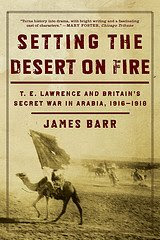On 16 December, The Times, a newspaper that ardently supported the invasion of Iraq in 2003, published a leader which argued that the lenient treatment given to the now famous shoe-thrower, Muntazer al-Zaidi, was a colourful illustration of Iraq's transformation. "Had a protester hurled shoes and shouted insults at Saddam Hussein during the visit of a world leader" the paper reflected, "the perpetrator and all his family would probably have been put to death." The editorial glibly ended: "Iraq is far from perfect, but at least its people have learnt to enjoy freedom of expression."
Freedom of expression can only be enjoyed if it is respected - and in al-Zaidi's instance this does not seem to have been the case. According to the New York Times, who interviewed al-Zaidi's brother, after his arrest the journalist was burned with a cigarette and beaten up in an effort to extract a confession from him. The BBC corroborated this report on Friday by talking to the judge investigating the case. With a furore now raging about the treatment of the journalist the judge has today backtracked somewhat, saying that al-Zaidi was bruised during his arrest, not from his treatment afterwards.
Al-Zaidi is due to be tried for "aggression against a foreign head of state" on 31 December. Presumably by then the prosecutors hope that his bruises will have healed.
Monday, December 22, 2008
Speaking too soon
Tuesday, December 16, 2008
Friday, December 12, 2008
How Rome linked Britain and the Arab world
We spent a few hours deciphering Roman inscriptions when I studied Latin at school, but unfortunately not long enough for any of what I learnt to stick. Which is a pity for they yield a lot of information. When I spotted the elegantly-lettered tombstone of Cautronius, a standard-bearer of the Italian troop [I think], when I visited Lebanon last year, I thought it worthy of a photograph.*
An inscription I saw in a museum in St Albans a while ago points to some interesting linkages across the Roman world, and hints at a tragic love story. It is dedicated to Regina, and reads:
D[is] M[anibus] Regina Liberta
et Coniuge Barates Palmyrenus
Natione Catuallauna An[nomum] XXX
To the spirits of the departed and to Regina his freedwoman
and wife, a Catavellaunian by tribe, aged 30
Barates of Palmyra set this up.
Barates, a Syrian from the eastern edge of Rome's empire found himself posted to its North-West Frontier. For the gravestone of his wife was found at Arbeia Roman Fort near South Shields, on Hadrian's Wall, where Barates served. Regina's tribe, the Catavellauni came from the area around St Albans.
As the almost tangible warmth of a photograph I took several years ago in Palmyra shows, South Shields is a long way off.

*The inscription mentions something about a "falca" - which appears to mean a scythe or sickle. Any help with translation gratefully received...
Labels:
globalisation,
inscriptions,
Latin,
Photography,
Roman Empire,
tombstones
Subscribe to:
Comments (Atom)




